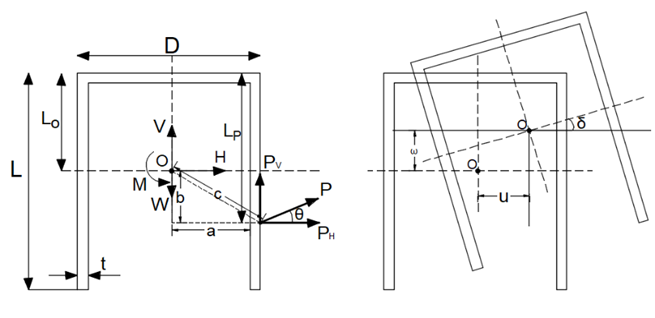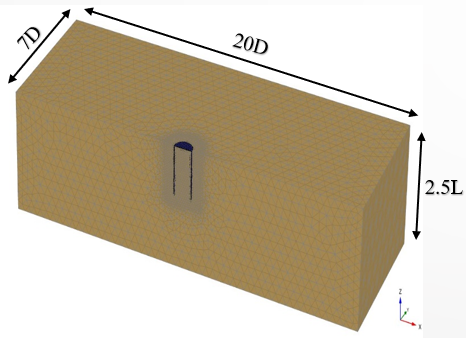Practical Approach to macroelement modelling of soil structure interaction for floating offshore structures
| Operation time: | 01.10.2022 - 30.09.2025 |
| Sponsor: | DAAD |
| Responsible: | Kachallah Kau, M.Sc. |
Brief description:
This research work concern with the development of practical macroelement model for offshore floating structure foundations. Studies in offshore engineering have increased considerably during the last few decades. This is primarily caused by ongoing interest not only in offshore oil and gas exploration, but also in growing production of clean wind energy, and the recent creation of floating infrastructure for wave and tidal energy. Floating structures are anchored to the seabed by various types of anchors, such as gravity-based shallow foundations, suction caissons, drag-embedment anchors, vertically-loaded anchors, suction-embedded plate anchors, gravity anchors, etc. With the discovery of more oil and gas reserves and the advancement of wind energy generation moving toward deep water, a tool for practical and reliable design and analysis of foundations for floating structures that can model the coupled nonlinearities of mooring-anchor-soil behaviour (soil-structure interaction - SSI) within dynamic analysis of the floating structure is very important.
At the moment, SSI is not taken into account directly in the dynamic analysis of structures with foundations. The common procedure, which includes iterative analysis between a structural model with simplified assumptions on ground fixation and a distinct geotechnical model with load assumptions from the structural model as a comprehensive finite element model of the structure and the load-bearing ground, may be oversimplified if the ground fixation model is too simple or load assumptions are not correct, and the finite element analysis of the whole structure-foundation-ground model is too complex and expensive. The finite element analysis is computationally intensive and ineffective in terms of both time and cost. Due to these limitations, macroelement models are increasingly being used to study non-linear SSI.
From a computational perspective, macroelement models are particularly intriguing since they can capture the core of SSI with all six (6) degrees of freedom and have already been successfully employed to predict the mechanical response of both onshore and offshore foundations. Such models' main benefits are their simplicity and capacity to represent the overall behaviour of bearing foundations (e.g., foundation capacity under combined loadings, nonlinear response of structures, seismic response assessment of structures, etc.). On the other hand, their use in real-world applications is constrained by the need to calibrate the macroelement parameters numerically or through experiments for each specific instance, making them limited to specific applications that create a challenge for their ability to address a variety of issues. Therefore, using them at this moment would require time-consuming finite element modelling or physical testing in advance.
This research work aims to investigate the macroelement model concept for offshore anchorage foundations supporting floating structures and to develop a practical macroelement framework in which macroelement parameters can be related to soil parameters, which are typically determined in the ground investigation.
The new macroelement model will be implemented in Matlab and validated using available experimental or numerical results from the literature. The established macroelement framework will serve as a tool for practical design and analysis of offshore foundations for floating structures.

Abb. 1: Nomenclature of the macroelement for suction craisson anchor foundations
 Abb. 2: FEM model of a suction caisson anchor in Plaxis-3D
Abb. 2: FEM model of a suction caisson anchor in Plaxis-3D 